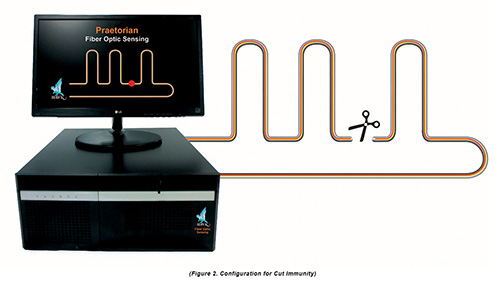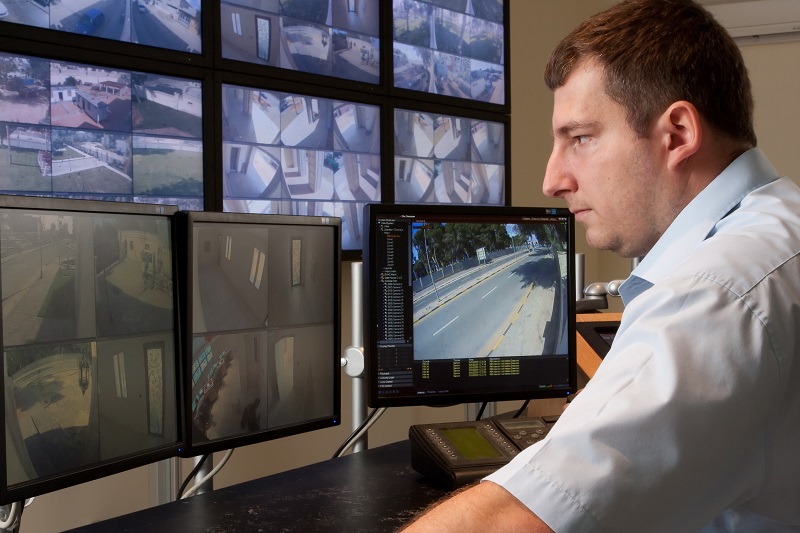Security Fibers: A Durable Solution for Cutting-Edge Security Systems
Security Fibers: A Durable Solution for Cutting-Edge Security Systems
Blog Article
The Ultimate Guide to Fiber Optic Safety And Security Systems for Your Company
In an era where protection worries are critical for businesses, recognizing the complexities of fiber optic technology can be transformative. This overview describes how incorporating fiber optic safety and security systems not just improves information security but likewise offers benefits like resistance to interference and real-time surveillance abilities.
Recognizing Fiber Optic Innovation

The core of a fiber optic cable consists of a slim glass or plastic facility, surrounded by a cladding layer that mirrors light back right into the core. Single-mode fibers are designed for long-distance transmission, while multi-mode fibers are appropriate for much shorter ranges, typically made use of within buildings.
Fiber optics are not just much faster but likewise a lot more secure than conventional circuitry. Their inherent resistance to electro-magnetic disturbance and the difficulty of taking advantage of the signal without discovery make them a preferred choice for companies focusing on information honesty and security. As organizations progressively rely upon safe and reliable interaction systems, understanding fiber optic technology comes to be vital for informed decision-making.
Trick Benefits of Fiber Optic Protection
When considering safety options for an organization, the benefits of fiber optic systems are specifically compelling. Fiber optic modern technology supplies phenomenal information transmission rates and bandwidth capacity, making it perfect for handling high-resolution video clip feeds from security cams. This ability guarantees that security employees obtain real-time data, enhancing total action times to prospective security threats.
In addition, fiber optic cords are inherently immune to electromagnetic interference, which can endanger the stability of traditional copper-based systems. This resistance makes certain that the data transmitted stays protected and uninterrupted, supplying a more reliable safety infrastructure. In addition, fiber optics are much less vulnerable to physical damages, as they are made from glass rather than steel, minimizing maintenance prices and downtime.
Another substantial benefit is the raised scalability of fiber optic systems. As company demands develop, fiber networks can be conveniently expanded to fit added safety and security tools without significant overhauls to the existing facilities. Fiber optic systems offer improved cybersecurity attributes, consisting of encryption abilities that shield sensitive data from unauthorized accessibility. Jointly, these benefits make fiber optic safety and security systems a durable selection for businesses seeking to improve their safety actions.
Installation Process and Considerations
Thinking about the complexities included, the setup process of fiber optic safety and security systems needs careful planning and execution. The initial action entails a comprehensive website evaluation to determine ideal places for cabling and equipment. This assessment should consider ecological aspects, existing facilities, and prospective vulnerabilities.

Furthermore, the setup must abide by neighborhood building ordinance and market requirements. This may consist of collaborating with different stakeholders such as building supervisors, IT groups, and safety and security personnel to ensure smooth combination with existing systems.
Post-installation, rigorous screening is essential to confirm system performance and recognize this link any type of issues that might develop. By prioritizing these factors to consider throughout the installation procedure, services can guarantee a durable and efficient fiber optic safety and security system that fulfills their certain safety and security demands.
Newest Innovations in Fiber Optic Protection
Recent innovations in fiber optic innovation have substantially enhanced the capacities of safety and security systems for organizations. One of one of the most noteworthy technologies is the combination of fiber optic sensing units that can discover resonances and intrusions along the border of a facility. These sensors give real-time monitoring, making it possible for rapid action to possible breaches.
In addition, the development of distributed fiber optic noticing technology enables for the continual monitoring of large locations with a solitary fiber cable. This technique not just lowers installation expenses yet also improves the dependability of monitoring systems by eliminating the requirement for numerous, different sensors.
Additionally, improvements in multiplexing strategies have actually enabled businesses to transfer huge quantities of information over fiber optic networks, boosting the capacities of video surveillance systems. High-definition video feeds can now be sent over long distances without loss of high quality, making sure that protection employees have accessibility to clear and workable details.
Last but not least, using artificial knowledge (AI) along with fiber optic systems is revolutionizing threat detection. AI formulas article can assess information from fiber optic networks to recognize uncommon patterns or habits, enabling positive safety and security steps. These developments collectively represent a significant jump onward in fiber optic safety innovation.
Picking the Right System for Your Service
Choosing the suitable fiber optic safety and security system for your great post to read business is crucial for ensuring optimum security and assurance. To make an informed selection, examine your certain safety and security needs, taking into consideration aspects such as the size of your properties, the nature of your procedures, and potential susceptabilities.
Begin by examining the degree of safety required; for example, high-risk settings may demand sophisticated systems with integrated security and intrusion discovery capabilities. Next, take into consideration scalability; as your company grows, your safety system ought to be qualified of broadening to accommodate boosted demands without considerable overhauls.
Additionally, check out the integrity and efficiency of various systems. Search for carriers with established track records and client endorsements that attest to their service high quality. It's likewise a good idea to make inquiries concerning the modern technology's compatibility with existing infrastructure, ensuring a seamless integration process.
Conclusion
Finally, fiber optic safety systems provide a robust option for improving service safety facilities. The combination of high-speed data transmission, resistance to electromagnetic interference, and advanced monitoring capacities considerably improves overall protection (fiber optic security system). By recognizing the modern technology, identifying its advantages, and thinking about the installation process, companies can make enlightened decisions. The most up to date developments further strengthen the performance of these systems, making sure that companies remain secure and versatile in an ever-evolving risk landscape.
Report this page